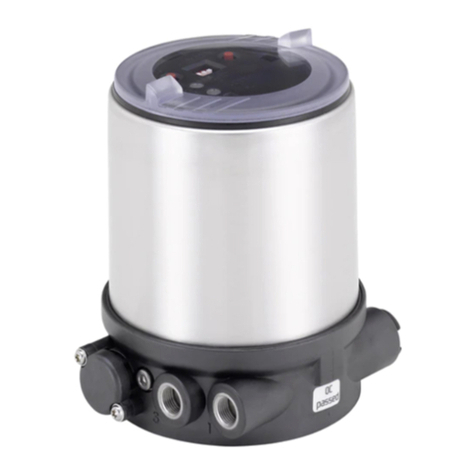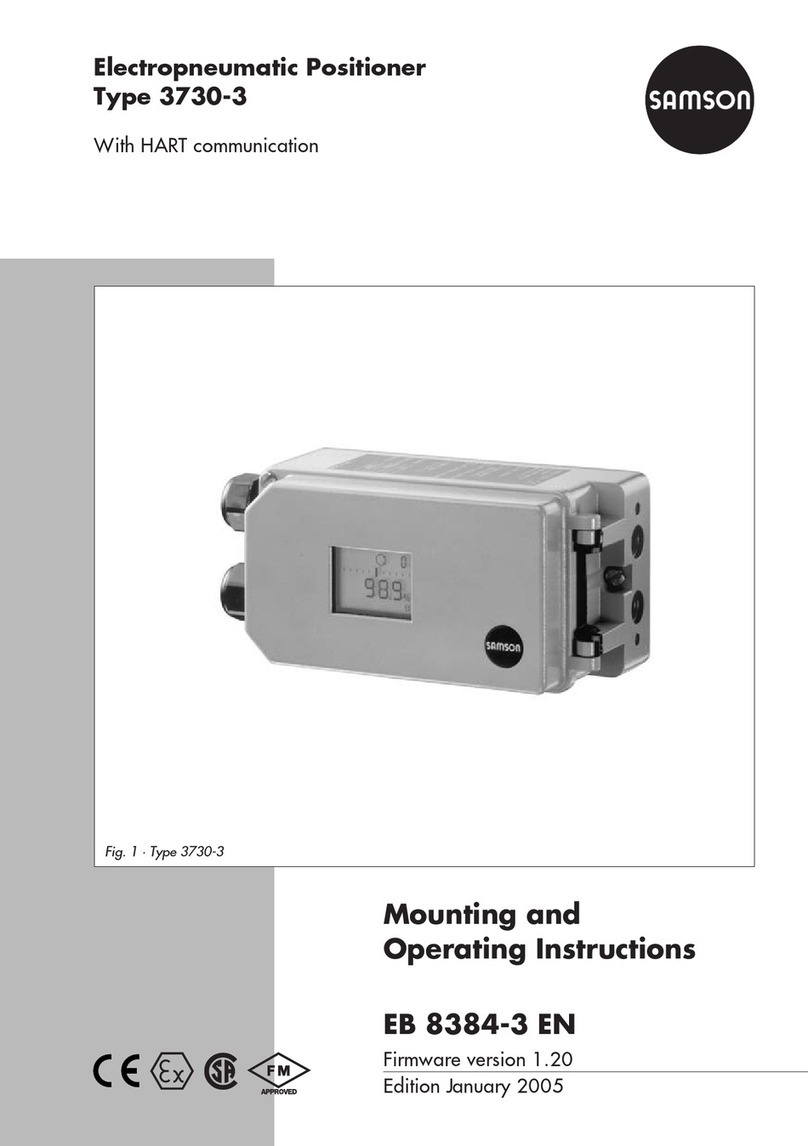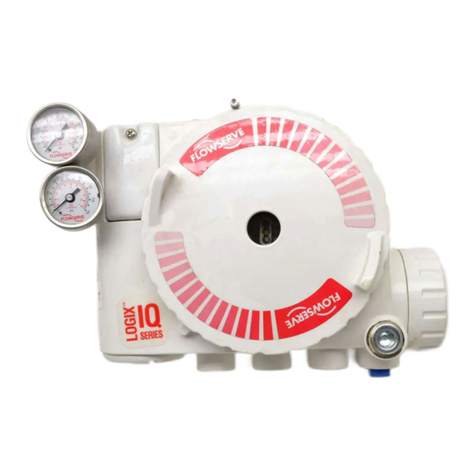
VVP10 HART HART
®
VALVE POSITIONER INSTALLATION, OPERATION, CONFIGURATION AND MAINTENANCE MANUAL
______________________________________________________________________________________________________________________________
6
ELECTRONIC BLOCK
The positioner receives a Setpoint signal (SP) via 4-20 mA input loop (or user value, when in disabled mode) and
executes a PID control algorithm using Hall sensor's position reading as input.
Hall magnetic sensor signal follows to ADC converter located on the analog electronics board, where it is converted to
a digital value and subsequently in position, according to the selected calibration range and unit. Position value (PV)
is converted into a 4-20 mA current, proportional to the calibrated range, in the CPU located on the main electronic
board.
The PID control generates an output for the analog board that will provide an electric current for the electromagnetic
coil to actuate on an I/P module (current/pressure) that will position valve/actuator.
The main board also has a HART
®
modem that interfaces the microcontroller signals with the HART
®
line to which the
positioner connects.
The display board has the controller block that interfaces LCD with CPU, adapting the messages to be displayed.
The main board CPU can be related to the positioner's brain, executing all time controls, HART
®
state machine, PID
control, diagnostics and transmitters common routines such as configuration, calibration and generation of the digital
output value for the current, proportional to the variable PV.
MECHANICAL BLOCK
The positioner is fed through the pneumatic inlet connection by a pressure already directed to the spool valve. The
spool valve is nothing more than a 5-way directional valve (input, two outputs and two outlets for these outputs). When
used as a single action, we simply close output 2, turning the valve into a 3-way system. See section 2.2 on assembly
for single or double actions).
A portion of this input pressure is diverted to an internal regulator, which has the purpose of maintaining a fixed
pressure in the I/P module (current/pressure), regardless of the supply pressure applied.
The regulated pressure passes through a restriction orifice, in order to decrease the flow that will reach the nozzle
system (I/P module). The nozzle system consists of an electromagnetic coil that receives electric current and generates
a magnetic field that attracts a blade. This blade approaches the nozzle when the electric current circulating in the coil
has its value increased and moves away when the current value is decreased. This movement allows the pressure
present at this point to be varied, since the blade away from the nozzle causes loss of pressure to the atmosphere,
reducing the so-called pilot pressure.
The pilot pressure is directed to a diaphragm that acts directly on the spool valve, as opposed to the force of a spring.
There is a balance of forces between the pilot pressure in the diaphragm area versus the spring force that positions
the spool in different positions, directing the supply pressure to output 1, output 2 or to equilibrium condition (when
control is achieved, that is, when it physically reaches the desired position).
There are also two external pressure switches for calibration of the internal regulator and the I/P module, which must
remain closed during normal operation of the equipment. See section 2.2 for the item on this calibration.



























